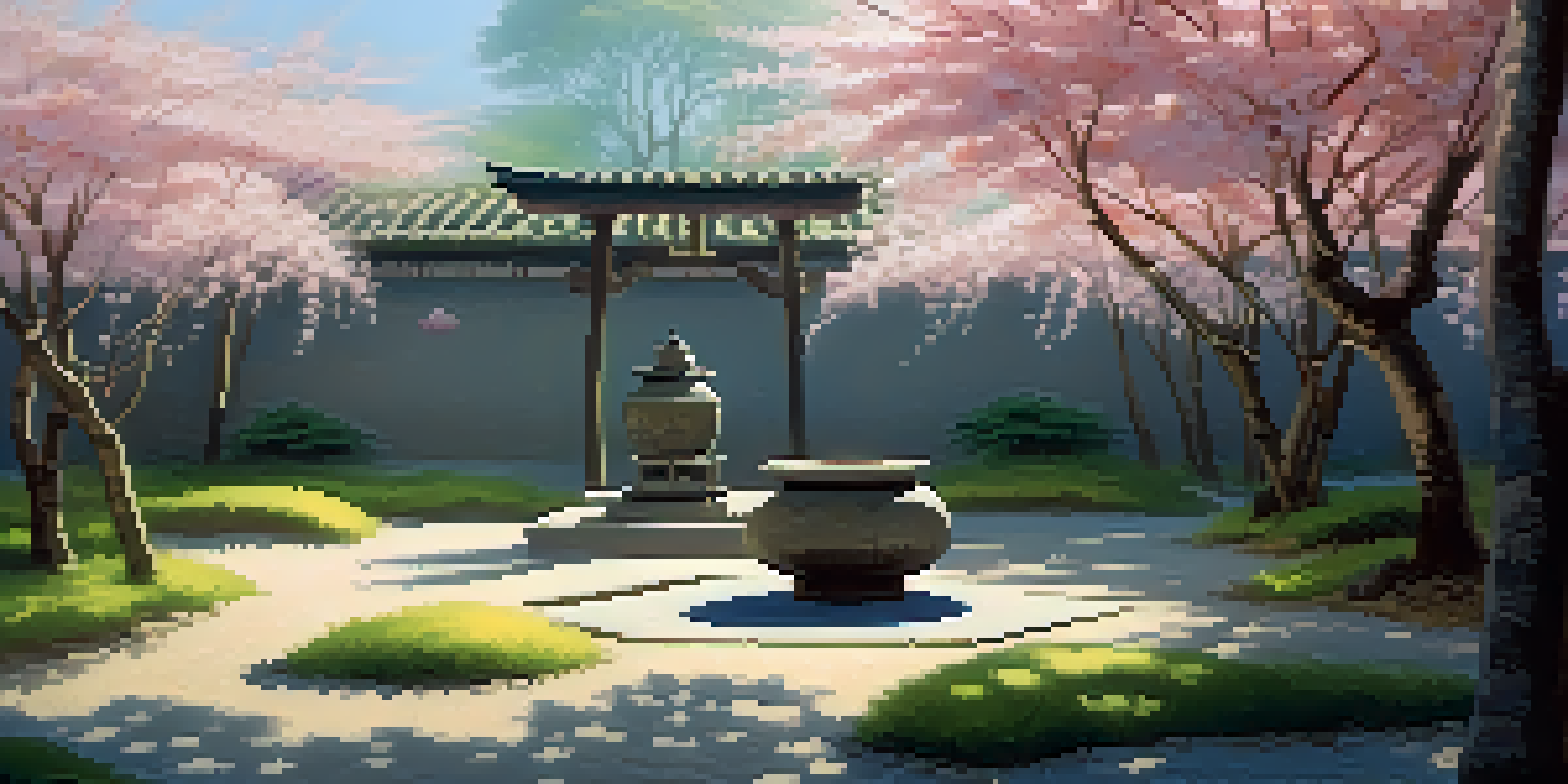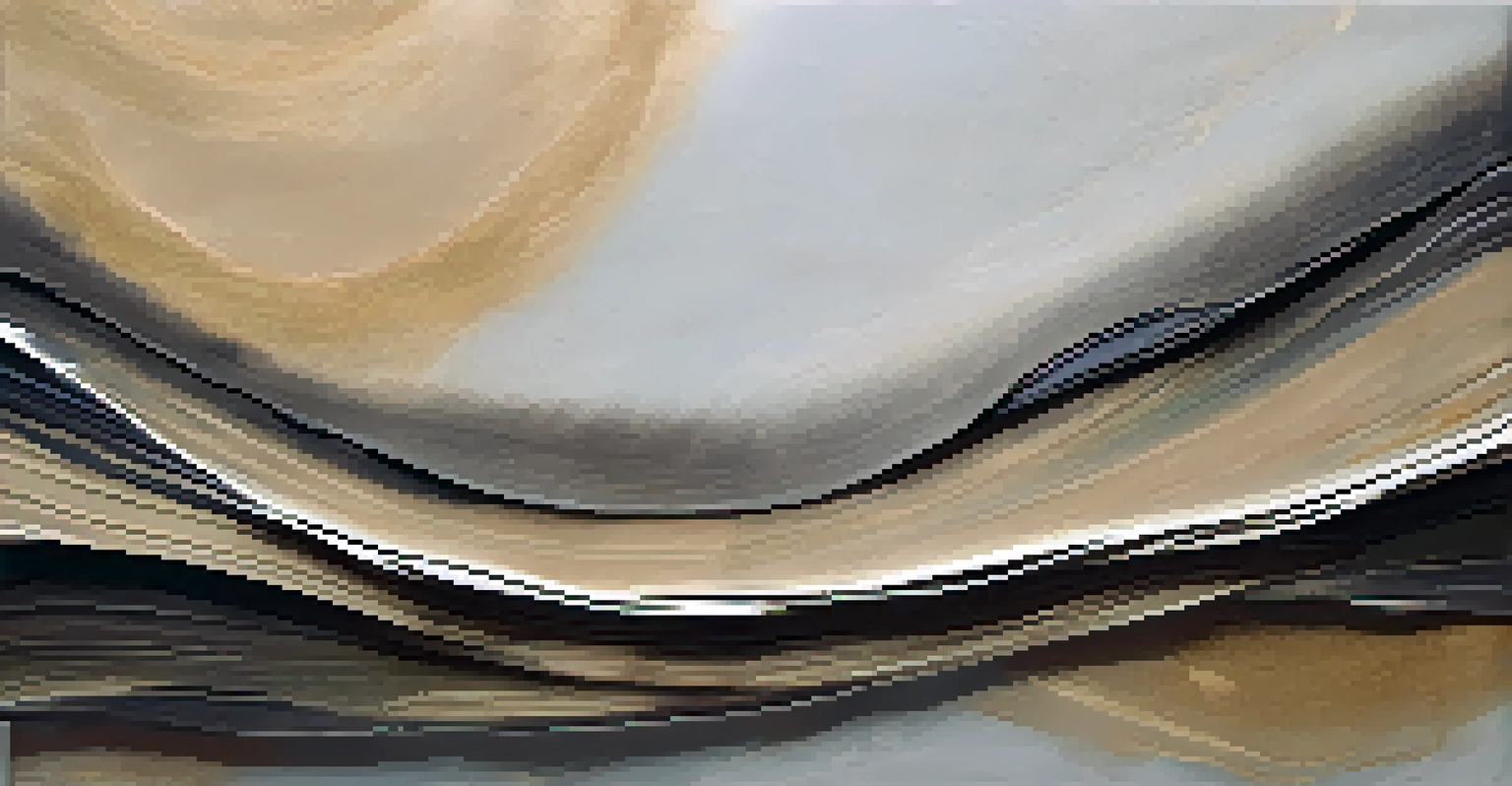The Influence of Eastern Philosophy on Western Art Forms

Understanding Eastern Philosophy's Core Principles
Eastern philosophy, encompassing traditions like Buddhism, Taoism, and Confucianism, emphasizes concepts such as harmony, balance, and interconnectedness. These principles offer a contrasting view to the often individualistic perspectives found in Western thought. By focusing on the collective experience and the nature of existence, Eastern philosophy invites artists to explore themes that resonate on a universal level.
Art is the most beautiful of all lies.
For instance, the Buddhist concept of impermanence encourages artists to capture fleeting moments, leading to works that reflect the transient nature of life. This focus on the present moment can be seen in various forms of art, from traditional paintings to modern installations. These ideas challenge artists to look beyond static representations and embrace change as a fundamental aspect of their work.
Related Resource
Moreover, the emphasis on inner peace and meditation in Eastern philosophies encourages artists to delve into their own consciousness. This introspection often manifests in art that seeks to evoke emotional responses rather than merely depict reality, thus broadening the scope of creative expression in Western art.
Zen Buddhism's Role in Shaping Artistic Techniques
Zen Buddhism, in particular, has had a profound influence on Western art, especially during the 20th century. Its principles of simplicity and spontaneity resonate with modern artists who strive for authenticity in their work. The practice of 'zazen' or seated meditation can lead to a heightened state of awareness, which many artists have adopted in their creative processes.

The use of negative space in Zen-inspired art encourages viewers to engage with the artwork on a deeper level, allowing them to fill in the gaps with their imagination. This technique has been integrated into various Western art forms, including painting, sculpture, and even graphic design. By valuing what is not present as much as what is, artists create a dialogue between the work and the audience.
Eastern Philosophy Influences Art
Eastern philosophies like Buddhism and Taoism inspire artists to explore themes of impermanence, harmony, and interconnectedness in their works.
Additionally, the concept of 'wabi-sabi'—finding beauty in imperfection—has inspired countless Western artists to embrace flaws and irregularities in their creations. This acceptance of impermanence and authenticity enhances the emotional depth of the artwork, making it not just a visual experience but a philosophical one as well.
The Influence of Taoism on Western Art Movements
Taoism, with its focus on harmony with nature and the flow of life, has also left an indelible mark on Western art. Artists who draw inspiration from Taoist principles often seek to create works that reflect the natural world and its rhythms. This connection to nature can be seen in various art movements, from Romanticism to Impressionism.
The journey of a thousand miles begins with one step.
For example, Impressionist artists like Claude Monet captured the essence of fleeting moments in nature, aligning with the Taoist appreciation for the beauty of the present. The fluid brushstrokes and emphasis on light and color evoke a sense of movement and change, mirroring the Taoist belief in the ever-changing nature of existence. This approach encourages viewers to appreciate the beauty around them, fostering a deeper connection with the environment.
Related Resource
Furthermore, contemporary artists often incorporate Taoist concepts into their installations and performances, inviting audiences to experience art as a living, breathing entity. This integration of philosophy and artistry encourages a more profound exploration of the human experience, ultimately enriching the cultural landscape of the West.
Eastern Philosophical Themes in Literature and Poetry
Eastern philosophy has not only influenced visual arts but has also permeated Western literature and poetry. Themes such as the search for enlightenment, the nature of suffering, and the journey of self-discovery resonate deeply within the works of many Western authors. These themes encourage readers to reflect on their own lives and experiences, creating a bridge between cultures.
Writers like Hermann Hesse, who drew heavily from Eastern philosophies, explore the quest for self-knowledge and spiritual awakening in novels like 'Siddhartha.' This narrative not only reflects Eastern ideals but also resonates with a Western audience seeking meaning in a fast-paced world. Such cross-cultural exchanges enrich the literary landscape, inviting readers to embrace diverse perspectives.
Mindfulness Enhances Creativity
Incorporating mindfulness practices from Eastern traditions helps Western artists connect more deeply with their work, fostering authenticity and emotional expression.
Moreover, contemporary poets often weave Eastern philosophical concepts into their work, using imagery and symbolism to evoke a sense of interconnectedness. This blending of ideas challenges traditional narrative structures and encourages readers to engage with poetry on a more profound level, highlighting the universality of human experience.
The Impact of Eastern Art Forms on Western Artists
The aesthetics of Eastern art forms, such as calligraphy, ink painting, and origami, have captivated Western artists for centuries. The meticulous techniques and philosophies behind these art forms often emphasize the journey of creation rather than the end product. This shift in focus encourages Western artists to adopt a more mindful approach to their work, valuing the process as much as the final piece.
For instance, the fluidity of Chinese ink wash painting has inspired Western artists to experiment with their own brush techniques, leading to a fusion of styles. Artists like Mark Tobey incorporated Eastern elements into their abstract works, creating a dialogue between cultures that resonates with viewers. This cross-pollination of ideas not only enriches individual artistry but also fosters a broader appreciation for diverse artistic traditions.
Related Resource
Additionally, the resurgence of interest in traditional crafts, such as pottery and textiles, reflects a growing desire among Western artists to reconnect with their creative roots. By embracing Eastern techniques and philosophies, they explore new avenues for expression, ultimately resulting in innovative and culturally rich artworks.
Exploring Mindfulness in Western Art Practices
Mindfulness, a core practice in many Eastern philosophies, has gained traction in the Western art scene as a means of enhancing creativity. Artists are increasingly incorporating mindfulness techniques into their daily routines, allowing them to connect more deeply with their work. This conscious approach fosters a sense of presence and clarity, enabling a more authentic artistic expression.
Yoga and meditation, often rooted in Eastern traditions, have become popular practices among artists seeking to cultivate a focused mindset. By integrating these practices into their creative processes, artists can reduce stress and enhance their ability to channel emotions into their work. This blend of physical and mental discipline leads to a more profound connection with their art.
Cultural Collaboration in Art
Globalization is driving collaborations between Eastern and Western artists, resulting in innovative hybrid art forms that celebrate diverse cultural perspectives.
Moreover, the growing emphasis on mental health in the creative community underscores the importance of mindfulness in fostering well-being. Artists who prioritize their mental health through mindfulness not only produce more meaningful work but also inspire others to explore their own creative potential.
The Future of Eastern and Western Art Collaborations
As globalization continues to blur cultural boundaries, the collaboration between Eastern and Western artists is becoming increasingly common. This exchange of ideas and techniques fosters a rich tapestry of artistic expression, resulting in innovative forms that reflect the complexities of our interconnected world. Artists are now more than ever willing to experiment with different styles, creating a dialogue that transcends geographical limits.
For instance, collaborative projects often combine diverse artistic traditions, leading to hybrid art forms that celebrate both cultures. Artists from different backgrounds are finding common ground, using their unique perspectives to create works that resonate on a global scale. This blending of philosophies not only enriches individual practices but also promotes cross-cultural understanding.

Furthermore, educational institutions are increasingly integrating Eastern philosophies into their art curricula, encouraging students to explore diverse approaches to creativity. As this trend continues, we can expect to see a new generation of artists who embrace the teachings of both Eastern and Western traditions, paving the way for a vibrant future in the art world.